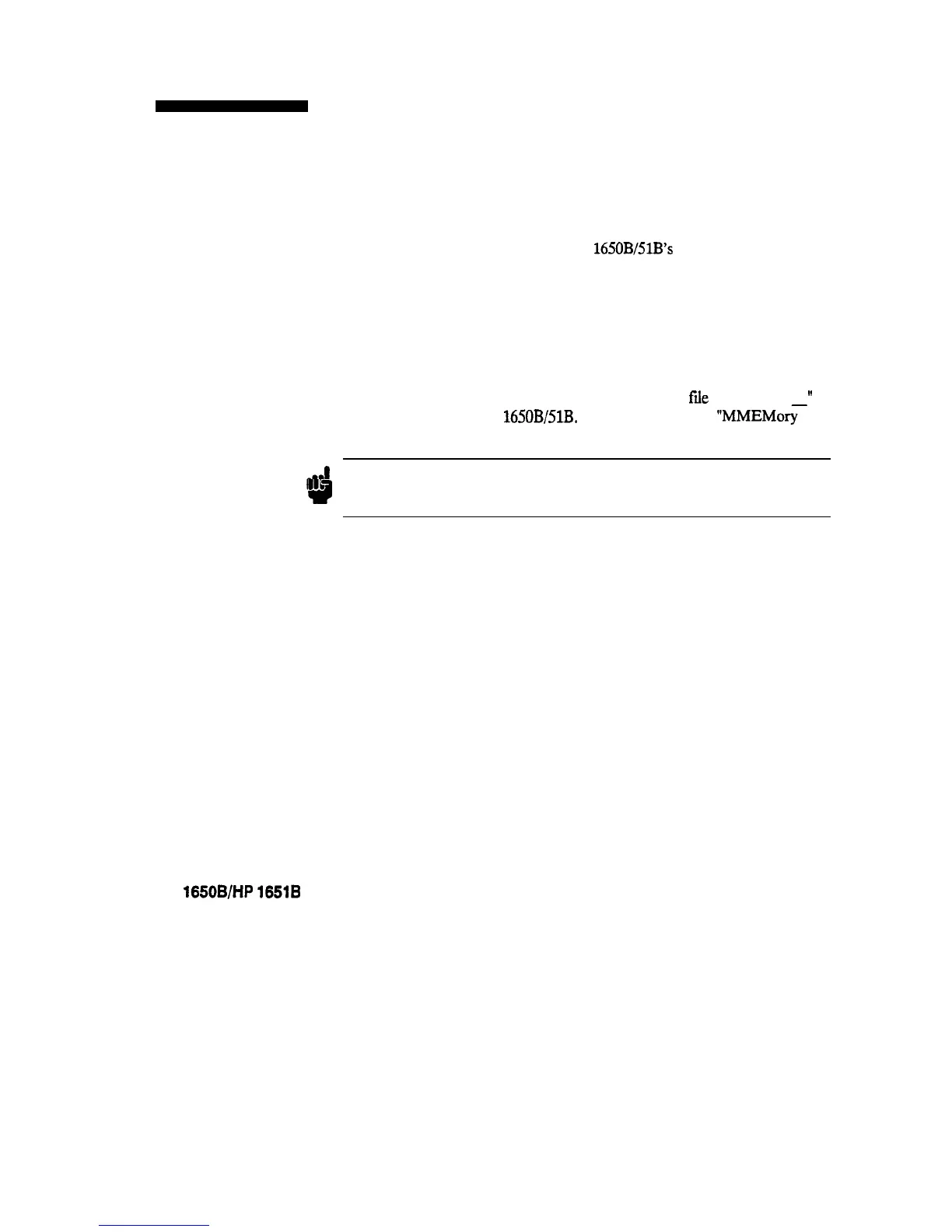Programming
an Instrument
Initialization
To make sure the bus and all appropriate interfaces are in a known state,
begin every program with an initialization statement. BASIC provides a
CLEAR command which clears the interface buffer. If you’re using
HP-IB, CLEAR will also reset the HP
1650B/XB’s
parser. The parser is
the program which reads in the instructions which you send it.
After clearing the interface, load a predefmed configuration file from the
disk to preset the instrument to a known state. For example:
OUTPUT XXX;":MMEMORY:LOAD:CONFIG 'DEFAULT-"
This BASIC statement would load the configuration
file
“DEFAULT
’
(if it exists) into the HP
1650B/51B.
Refer to the chapter
“MMEMoG
Subsystem” for more information on the LOAD command.
#’
Note
d
Refer to your controller manual and programming language reference
manual for information on initializing the interface.
HP
1650B/HP
16518
Programming Reference
Introduction to Programming an Instrument
l-11
